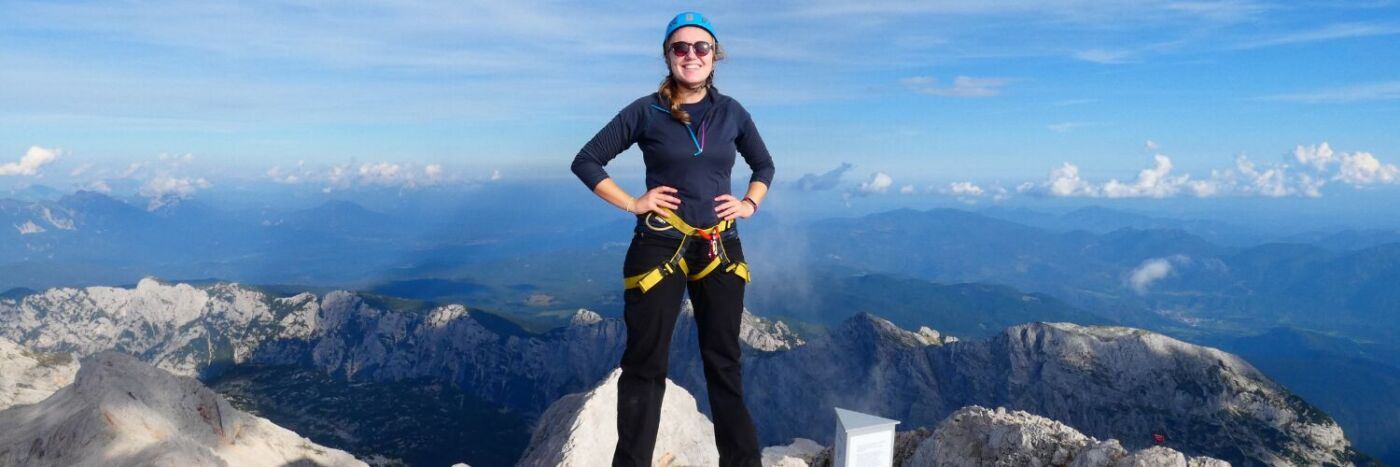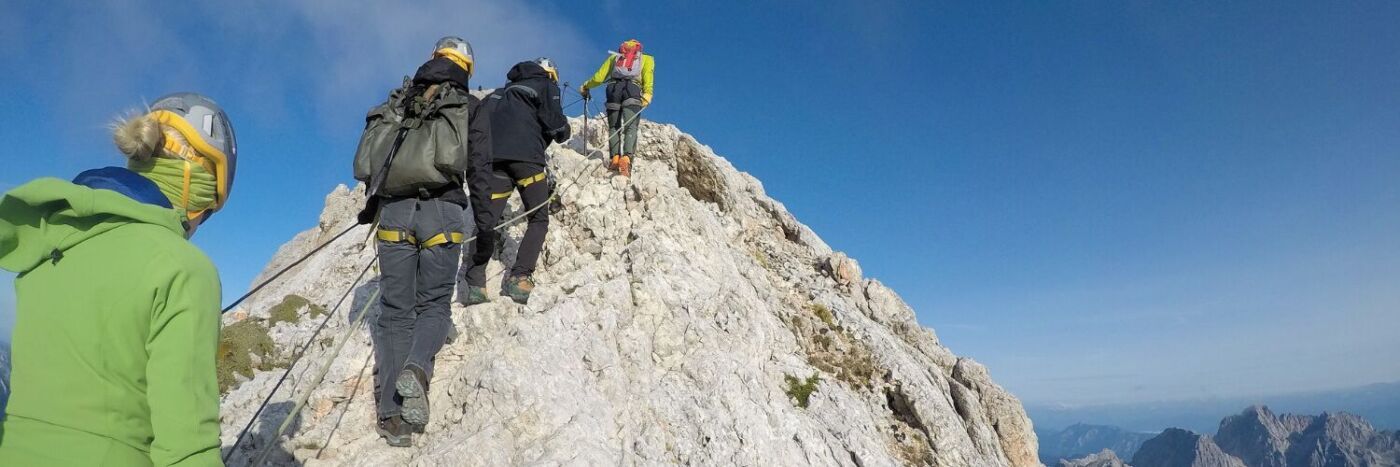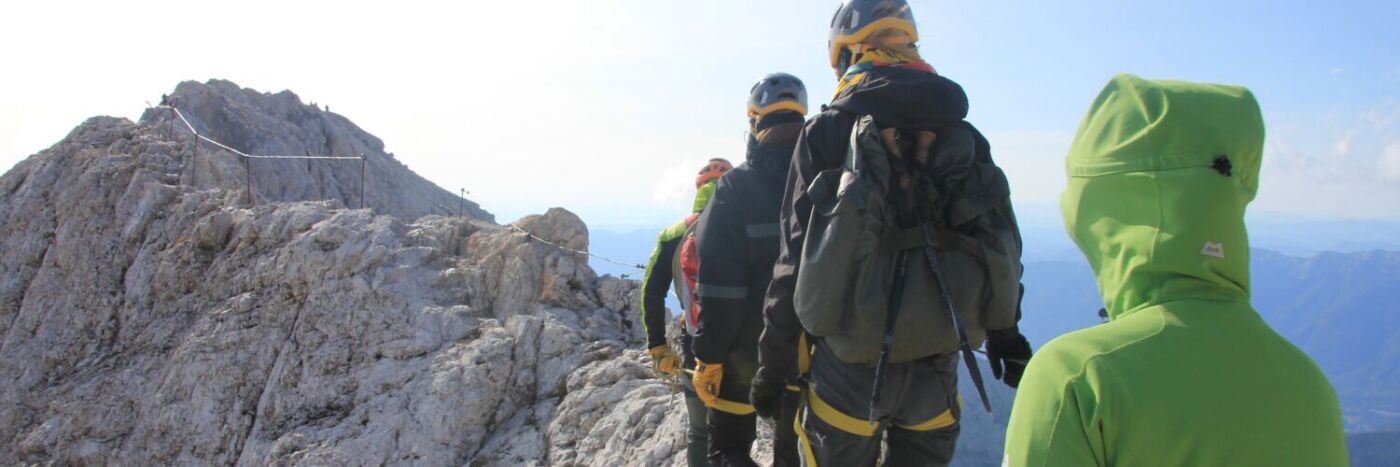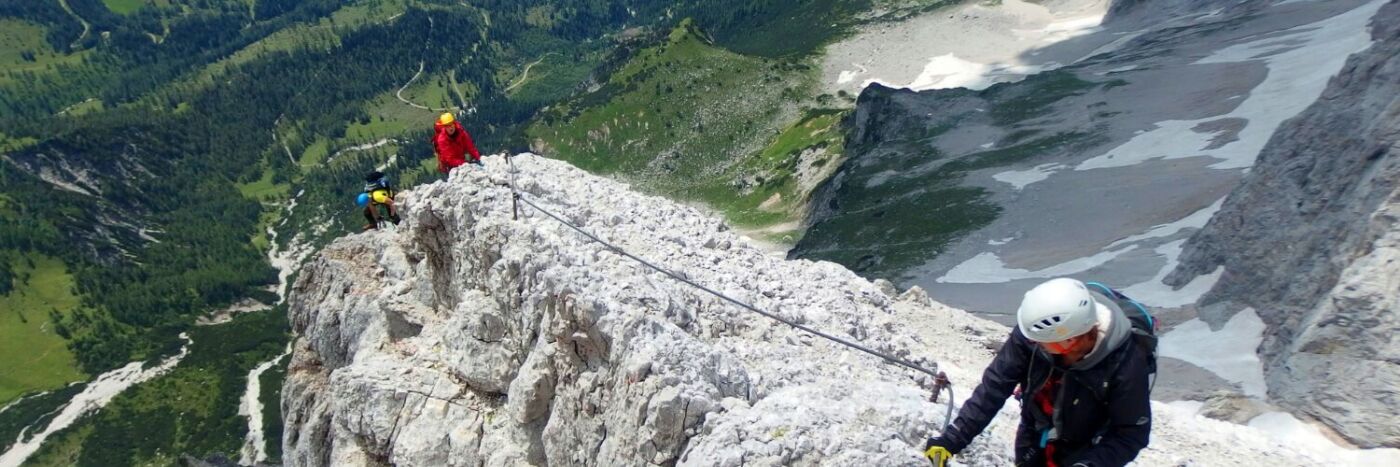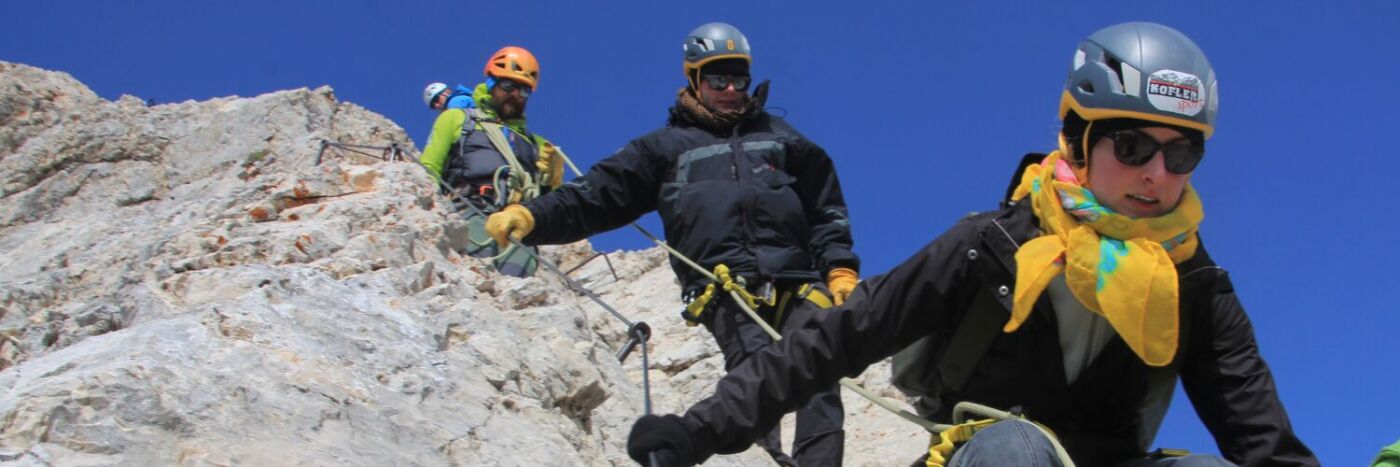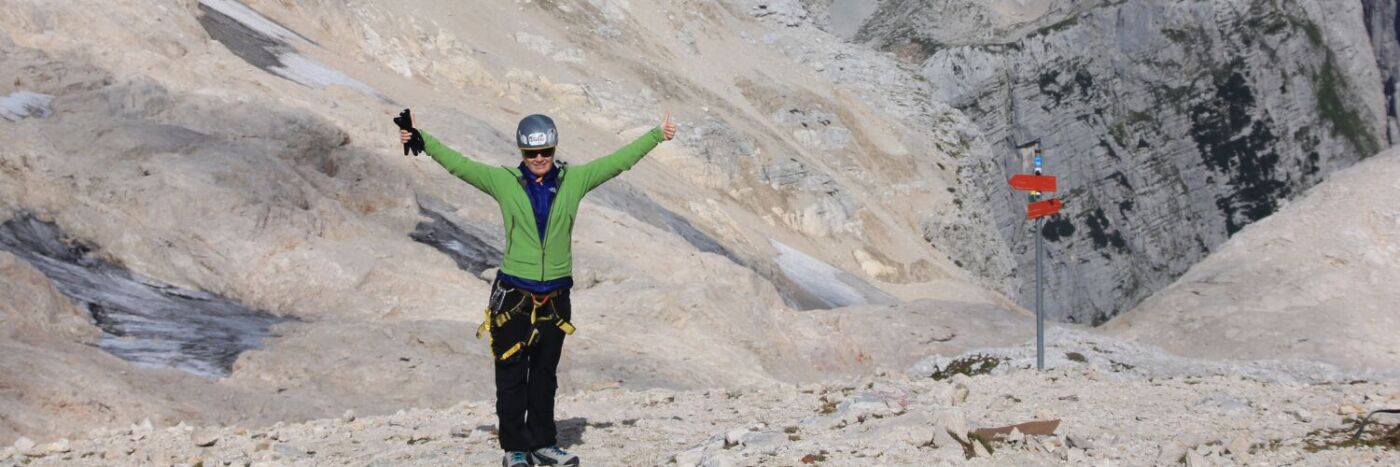How to Prepare for Your First Via Ferrata Adventure
If you’ve ever dreamed of standing high on an airy ridge, clipped safely to the mountainside with jaw-dropping views stretching in every direction, via ferrata is your gateway to that experience. Italian for “iron way,” a via ferrata is a protected climbing route that uses fixed cables, ladders, rungs, and bridges to help you move through otherwise challenging terrain. It’s an incredible way to experience the mountains – and if you’re joining us on Mt Triglav or any of our other adventures with via ferrata sections, this guide will help you feel confident, prepared, and excited.
Understanding Via Ferrata: A Little History and What to Expect
Via ferrata routes have a fascinating history. They were first established in the Dolomites during the First World War. The limestone landscape there is filled with pinnacles and ridges, and Italian and Austrian troops needed ways to cross steep terrain with heavy equipment. To help pull themselves along, they installed cables, rungs, and ladders – creating the foundations of what we know today as via ferrata.
While modern via ferrata is designed for recreation, it still requires respect, preparation, and care. Even if a route is rated “easy,” you’ll still need a head for heights and enough arm strength to support yourself as you move along cables and steps. What feels straightforward to one person may feel very exposed to another – difficulty is always relative to your fitness, experience, and confidence.
There are several different systems used to grade via ferrata routes:
-
The Schall Scale: Ranges from A to F, with ‘A’ being the easiest and ‘F’ the most challenging.
-
The Hülser Scale: Uses K1 to K6 ratings (the ‘K’ stands for Klettersteig, German for “climbing path” or “iron way”).
-
K1–K2: Typically considered accessible to the general public, though still requiring care and preparation.
-
K3: More demanding, with greater exposure and more sustained use of your upper body.
-
Routes rated higher on these scales usually involve steeper sections, longer stretches without rests, or more technical movement.
What Makes Via Ferrata Different from Hiking or Climbing?
Unlike traditional rock climbing, via ferrata doesn’t require advanced ropework or technical climbing skills. You’ll be secured to a steel cable the entire time using a harness and lanyards with carabiners that clip onto the cable. It feels a lot like scrambling – using your hands and feet to move over rock – but with extra security and purpose-built anchors that make exposed sections safe and accessible.
Build Your Confidence with Heights
One of the most important things you can do is start building confidence with heights and exposure in a safe, supported environment. If you haven’t spent much time on steeper ground, consider joining a guided walk or scrambling course to help you get familiar with the sensation of being above drops. Simply becoming more aware of how your body feels in those situations can ease nerves. When you’re on your via ferrata adventure, remember: your harness and lanyards will always keep you securely attached to the safety cable, and your Mountain Guide will be right there to support you every step of the way.
Train for Endurance and Strength
Via ferrata routes often involve long days with steady climbing. To prepare, build leg strength with uphill hiking, stair climbs, or squats. Work on grip and upper body endurance – think planks, or using trekking poles to engage your arms. Train cardio fitness to help you move steadily at altitude without fatigue.
Learn How the Equipment Works
Your Guides will give you a full briefing and hands-on training before you start. But it helps to understand the basics. Your harness is worn around your waist and legs, keeping you securely attached. Two lanyards with carabiners clip into the safety cable – as you move past anchors, you unclip and reclip one at a time so you’re always connected. A helmet protects you from any loose rock or bumps along the way. Pro tip: practice unclipping and clipping in a safe spot on the ground if you want to build confidence in how the system feels.
Choose the Right Kit
Having the right gear can make a big difference in comfort and confidence. Sturdy hiking boots with good grip are essential for rock and scree. Lightweight gloves can help protect your hands on cables and ladders. Wear layers you can adjust easily and vent, as temperatures can change quickly with elevation. A small day-pack will carry your water, snacks, and essentials. Remember, we provide all technical equipment – harness, helmet, and lanyards – so you don’t need to buy your own unless you’d prefer to.
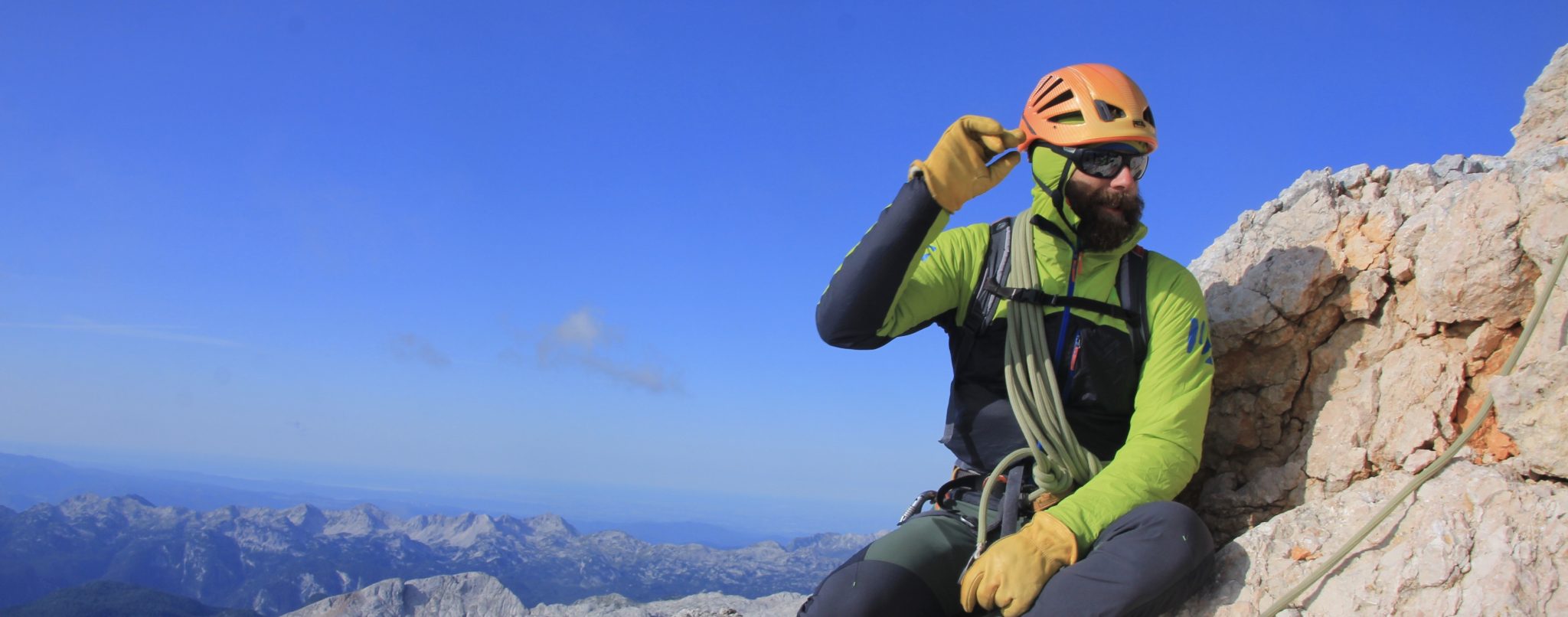
Trust Your Guide and Take Your Time
Your Mountain Guide is there to keep you safe and help you get the most from the experience. If you ever feel nervous or unsure, just let them know. Steady progress is key. Communicate openly – if something doesn’t feel right, speak up. Celebrate each step – you’re doing something incredible.
One of the most picturesque places to learn via ferrata is on our Mt Triglav Trek in Slovenia, where you’ll be guided throughout the mountain adventure by an IFMGA-certified Mountain Guide. An IFMGA-certified guide is a professional whose competence has been certified worldwide by an official institution accredited by the IFMGA (International Federation of Mountain Guiding Associations). They are qualified to lead, instruct, advise, and coach members of the public in all four disciplines of mountaineering, ski touring, rock climbing, and ice climbing. Our guides are also First Aid trained and have extensive experience leading groups in the Julian Alps, so you can feel confident you’re in safe hands.
Or if you’d like to take your skills further, get in touch with us about an incredible four-day short break exploring a selection of the best via ferratas in the southern French Alps.
Ready to Clip In?
Your first via ferrata adventure is an unforgettable blend of challenge and exhilaration. With preparation, trust in your equipment, and the support of your guides, you’ll discover that what once looked intimidating can become one of the most rewarding experiences you’ll ever have. If you have any questions about what to expect or how to get ready, don’t hesitate to get in touch – we’re here to help you feel confident and excited to tackle your next big adventure.
